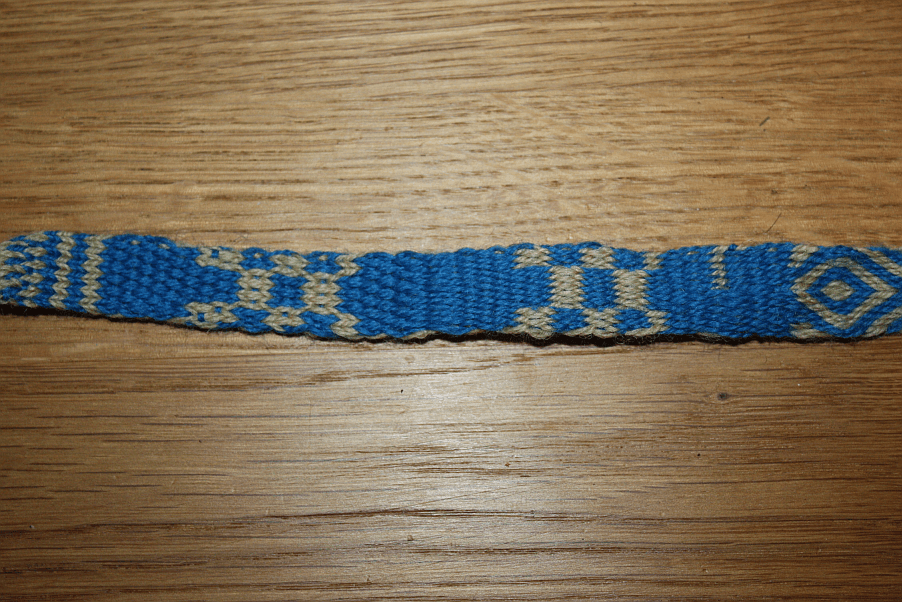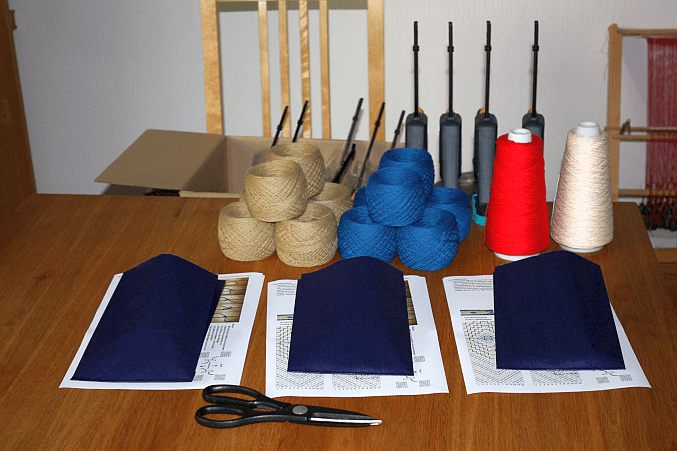In 2017, Anja got together with me to organise a weekend meet-up for sewing, chatting, and having some workshops with me, called "Historisches Nähtreffen", and that was such a success that we decided to do it again.
So we asked people if they would like a second one (they did!) and what kind of workshops they would like, and in the end, we decided on the basics of sewing and on how to spin with distaff and spindle, just like last year, and two new kids on the block: medieval embroidery and an introduction to sprang.
Which means I've been sitting down doing some sprang in the last weeks, too - to find out about possible frame solutions for the workshop, to test materials and, of course, to make a plan for the actual workshop. As in "what to teach and in what sequence".
The result? This:

That's the preliminary test run, and there will be more tests - but I really like how this came out, and that it is actually large enough to fit a phone (or a powerbank, in this case). I'm also amazed, as usual, how stretchy this is. When it came off the frame, it was really long and really narrow, and I had my doubts that it would actually fit. It still gets longer and narrower when taken off:

Sprang. Fascinating.
So we asked people if they would like a second one (they did!) and what kind of workshops they would like, and in the end, we decided on the basics of sewing and on how to spin with distaff and spindle, just like last year, and two new kids on the block: medieval embroidery and an introduction to sprang.
Which means I've been sitting down doing some sprang in the last weeks, too - to find out about possible frame solutions for the workshop, to test materials and, of course, to make a plan for the actual workshop. As in "what to teach and in what sequence".
The result? This:

That's the preliminary test run, and there will be more tests - but I really like how this came out, and that it is actually large enough to fit a phone (or a powerbank, in this case). I'm also amazed, as usual, how stretchy this is. When it came off the frame, it was really long and really narrow, and I had my doubts that it would actually fit. It still gets longer and narrower when taken off:

Sprang. Fascinating.




 Starting off easy - a few straight lines, a bit of doubleface, getting an understanding of how things work.
Starting off easy - a few straight lines, a bit of doubleface, getting an understanding of how things work. Speaking of the brain-bender, here's the current status. As you can see, I have done my best to try out how to deal with mistakes. Those, by the way, are mostly due to my weaving in the evening at the moment, when I'm already a bit tired... as a robust system should be up to a tired weaver, right?
Speaking of the brain-bender, here's the current status. As you can see, I have done my best to try out how to deal with mistakes. Those, by the way, are mostly due to my weaving in the evening at the moment, when I'm already a bit tired... as a robust system should be up to a tired weaver, right?


